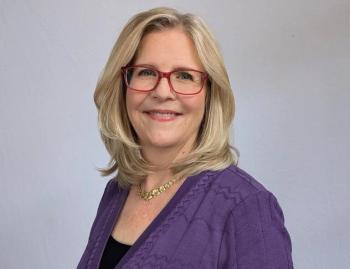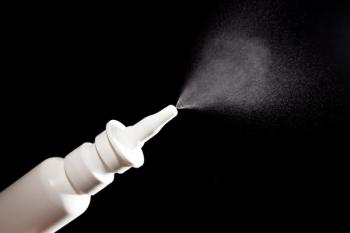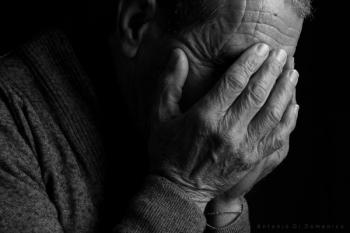
- Psychiatric Times Vol 19 No 3
- Volume 19
- Issue 3
When Does Shyness Become a Disorder?
Social anxiety disorder, the third most common mental disorder, is often underdiagnosed and undertreated. A leading expert on SAD provides an overview, including highlights of the barriers to diagnosis, a differential diagnostic approach and treatment options for social anxiety disorder.
Over 2,000 years ago, Hippocrates described a patient with social phobia, which is also known as social anxiety disorder (SAD): "He dare not come in company for fear he should be misused, disgraced, overshoot himself in gesture or speech or be sick; he thinks every man observes him."
SAD Overview
The lifetime and 12-month prevalences of SAD are 13.3% and 7.9%, respectively, making SAD the third most common psychiatric disorder following major depression and alcohol dependence/abuse (Kessler et al., 1994). Despite this high prevalence rate, SAD remains woefully underdiagnosed.
There are two subtypes of SAD. Non-generalized SAD is the less severe subtype and includes those individuals who experience anxiety in only one or two types of social situations (primarily public speaking and/or performance anxiety experienced by entertainers). Individuals with non-generalized SAD usually have adequate social skills and function normally outside these specific performance situations.
The majority (about 75%) of those who suffer from the generalized subtype of SAD experience distress in nearly all interpersonal situations. Generalized SAD affects females twice as frequently as males, typically appears in the mid-teens, and rarely occurs after age 25. When fears interfere with social, occupational or family life, the affected individual is not suffering from normal shyness, but rather a treatable anxiety disorder.
Recovery from generalized SAD without treatment is rare. Generalized SAD, which often appears early in prepubertal children, can effectively cause a developmental psychosocial arrest by preventing normal peer interactions, assertiveness and optimal school performance due to extreme fear of negativity from peers or authority figures. It should be kept in mind that months, or even years, may be needed for the individual to achieve social competence even after treatment attenuates pathological social fear and avoidance to a manageable level.
Comorbidity
Individuals with generalized SAD are more likely to have comorbid psychiatric disorders (e.g., depression, other anxiety disorders, alcohol/drug abuse) than those with the more circumscribed performance subtype (Magee et al., 1996). Generalized SAD confers functional impairment to roughly the same degree as major depression (Wittchen and Beloch, 1996). Kessler et al. (1994) suggested a model for comorbidity in which both severity of illness and risk for developing additional psychiatric disorders increase progressively. Theoretically, early detection and treatment of SAD may prevent the development of other psychiatric disorders that frequently co-occur with untreated SAD.
Even clinicians familiar with SAD find it difficult to tease it apart from other co-existing conditions. Many of the symptoms of SAD overlap with those of depression and other anxiety disorders. Individuals who present with anxiety, depression, or alcohol- or substance-related disorders should be considered at high risk for undetected SAD. Table 1 shows a differential diagnostic schema for detecting SAD, which commonly co-occurs with other anxiety disorders, depression or alcohol dependence/abuse. Social anxiety disorder is present in 30% to 50% of individuals with panic disorder (Magee et al., 1996; Montejo and Liebowitz, 1994). The fear and avoidance in SAD is invariably linked to feared social situations. Likewise, major depression frequently co-exists with SAD, presenting clinicians with the diagnostic challenge of distinguishing social withdrawal due to depression from fearful social avoidance.
Alcohol-related disorders occur twice as often in those affected by SAD than in those without (Schneier et al., 1992). Social anxiety disorder usually precedes alcohol abuse and about 20% of those treated for alcohol-related disorders have SAD (Randall et al., 2001). If undetected, the risk of rapid relapse is high, since psychosocial treatments that are often a central aspect of treating alcohol abuse may be difficult or impossible to attend. Importantly, when SAD is treated in alcohol abusers, both social anxiety and alcohol use appear to improve.
Childhood sexual and/or physical abuse histories are associated with SAD in adults (especially women) (Stein et al., 1996). Individuals surviving events perceived as life-threatening are at greater risk for developing secondary SAD than individuals who experience less severe trauma (Boudreaux et al., 1998). It is not known if secondary SAD in trauma victims is different in character or response to treatment.
Finally, certain medical conditions such as stuttering, benign essential tremor, Parkinson's disease, irritable bowel syndrome, disfiguring burn injuries and so on, can cause symptoms resembling SAD (George and Lydiard, 1994). Limited literature and clinical experience suggest that symptoms secondary to certain medical conditions may respond to treatment. Clearly, more research is needed in this area.
Diagnostic Questions
The recently developed Social Phobia Inventory (SPIN) is a self-rated instrument that assesses the spectrum of cognitive, behavioral and physiological symptoms associated with SAD. Three of the 17 SPIN items have recently been found to reliably identify the majority of individuals with generalized SAD and may provide clinicians with a quick screening tool (Connor et al., 2001). Those three items are:
- Being embarrassed or looking stupid are among my worst fears.
- Fear of embarrassment causes me to avoid doing things or speaking to people.
- I avoid activities in which I am the center of attention.
Treatment
Treatment of SAD should focus on: 1) acute reduction and control of pathological social anxiety and related phobic avoidance; 2) adequate treatment of depression/comorbid conditions; and 3) long-term management to permit and sustain optimal improvement. Cognitive-behavioral therapies, medication treatments and their combination have all been shown to be effective interventions (Lydiard, 2001).
Pharmacotherapy
Performance fears are nearly always predictable and thus amenable to prn use of a ß-blocker or benzodiazepine (Table 2). Beta-blockers help control tremor, autonomic arousal/palpitations and other symptoms. Some patients benefit more from judicious use of a benzodiazepine taken 30 minutes to 60 minutes prior to the event. In contrast, generalized SAD is less predictable, and continual treatment is recommended.
Antidepressants. Because of the significant risk for depression in individuals with SAD, first-line antidepressant treatment is preferred whenever possible (Lydiard, 2001). The selective serotonin reuptake inhibitors are now considered the first-line pharmacological treatment for social phobia. The SSRIs also appear to be effective against the other psychiatric disorders with which SAD commonly co-occurs, such as panic disorder, major depression, generalized anxiety disorder and posttraumatic stress disorder. The limited empirical database suggests that SSRI treatment may require higher doses (up to twice as much as required for depression) for a significant percentage of patients. About 50% to 75% of patients with generalized SAD respond to any given SSRI (Bruce and Saeed, 1999). Failure to respond to one SSRI does not preclude response to another, so sequential trials of two or more SSRIs are suggested before changing classes of medication.
Irreversible MAOIs. The first antidepressant shown to be useful for SAD was the irreversible monoamine oxidase inhibitor phenelzine (Nardil). Tranylcypromine (Parnate) also appears to be effective for the treatment of SAD. However, because of the significant side-effect burden (i.e., weight gain, orthostatic hypotension, insomnia) and the inconvenience of dietary tyramine restriction, the MAOIs are used primarily when other treatments have failed (Bruce and Saeed, 1999).
Tricyclics. With the exception of clomipramine (Anafranil), which inhibits serotonin reuptake like the SSRIs, the tricyclic antidepressants are probably not effective for SAD (Ballenger et al., 1998; Bruce and Saeed, 1999; Davidson, 2000). While clomipramine is an effective anxiolytic and antidepressant, it causes intolerable side effects (sexual dysfunction, weight gain) in most patients.
Other antidepressants. The newer antidepressants venlafaxine (Effexor) and nefazodone (Serzone) have been less studied, but they show promise as treatments for SAD (Bruce and Saeed, 1999). The novel antidepressant bupropion (Wellbutrin) and the azapirone anxiolytic buspirone do not appear to have efficacy in SAD.
Benzodiazepines. Benzodiazepines (BZs) are effective for SAD but are preferably used as adjunctive treatment with antidepressants (Bruce and Saeed, 1999). Since they are not especially effective for treating/preventing depression or anxiety disorders, which commonly accompany SAD, monotherapy with BZs should be limited to individuals intolerant of or unresponsive to other treatments. High-potency BZs (clonazepam [Klonopin], alprazolam [Xanax] and probably others) are effective for SAD.
Other agents. The anticonvulsant gabapentin (Neurontin), which potentiates
-aminobutyric acid (GABA) function, has been found more effective than placebo in generalized SAD (Pande et al., 1999). Other anticonvulsants with GABA-potentiating properties may prove to be useful for patients with mood instability, current or prior alcohol-related disorders, or head trauma. The empirical database is currently quite limited.
Psychosocial Treatments
Several types of behavioral and cognitive-behavioral therapy (CBT) treatments appear to be effective in SAD (Heimberg, 1993). These treatments all target the core SAD features of cognitive distortions and avoidance behavior. Combined pharmacotherapy and CBT treatment are thought to be superior to either treatment alone for treating SAD (Bruce and Saeed, 1999). The available empirical information suggests that acute treatment differences between medications alone and medications with CBT are modest. However, there appears to be a lower rate of relapse following CBT than after medication discontinuation.
Conclusion
Social anxiety disorder is still under-recognized and undertreated, despite recent advances in treatment. Support for public health education programs aimed at disseminating information and promoting increased awareness of SAD via the media and the Internet is clearly needed. In addition, education of teachers, school nurses, pediatricians and other pediatric health care providers will help increase rates of detection in children.
We routinely screen children and adults for tuberculosis, which is a serious but relatively rare disease. Given the estimated $42 billion annual cost of anxiety disorders in the United States (Greenberg et al., 1999), research targeted at early detection and treatment of SAD would appear to be a good investment.
References:
References
1.
Ballenger JC, Davidson JRT, Lecrubier Y et al. (1998), Consensus statement on social anxiety disorder from the International Consensus Group on Depression and Anxiety. J Clin Psychiatry 59(Suppl 17):54-56.
2.
Boudreaux E, Kilpatrick DG, Resnick HS et al. (1998), Criminal victimization, posttraumatic stress disorder, and comorbid psychopathology among a community sample of women. J Trauma Stress 11(4):665-678.
3.
Bruce TJ, Saeed SA (1999), Social anxiety disorder: a common, underrecognized mental disorder. Am Fam Physician 60(8):2311-2320, 2322 [see comments].
4.
Connor KM, Kobak KA, Churchill LE et al. (2001), Mini-SPIN: a brief screening assessment for generalized social anxiety disorder. Depress Anxiety 14(2):137-140.
5.
Davidson JR (2000), Social anxiety disorder under scrutiny. Depress Anxiety 11(3):93-98.
6.
George MS, Lydiard RB (1994), Social phobia secondary to physical disability. A review of benign essential tremor (BET) and stuttering. Psychosomatics 35(6):520-523.
7.
Greenberg PE, Sisitsky T, Kessler RC et al. (1999), The economic burden of anxiety disorders in the 1990s. J Clin Psychiatry 60(7):427-435.
8.
Heimberg RG (1993), Specific issues in the cognitive-behavioral treatment of social phobia. J Clin Psychiatry 54(suppl):36-45.
9.
Kessler RC, McGonagle KA, Zhao S et al. (1994), Lifetime and 12-month prevalence of DSM-III-R psychiatric disorders in the United States. Results from the National Comorbidity Survey. Arch Gen Psychiatry 51(1):8-19.
10.
Lydiard RB (2001), Social anxiety disorder treatment: role of SSRIs. In: Perspectives in Psychiatry, Vol. 8: SSRIs in Depression and Anxiety, 2nd ed. Montgomery SA, den Boer JA, eds. New York: John Wiley & Sons, pp129-150.
11.
Magee WJ, Eaton WW, Wittchen HU et al. (1996), Agoraphobia, simple phobia, and social phobia in the National Comorbidity Survey. Arch Gen Psychiatry 53(2):159-168.
12.
Montejo J, Liebowitz MR (1994), Social phobia: anxiety disorder comorbidity. Bull Menninger Clin 58(2 suppl A):A21-A42.
13.
Pande AC, Davidson JR, Jefferson JW et al. (1999), Treatment of social phobia with gabapentin: a placebo-controlled study. J Clin Psychopharmacol 19(4):341-348.
14.
Randall CL, Thomas S, Thevos AK (2001), Concurrent alcoholism and social anxiety disorder: a first step toward developing effective treatments. Alcohol Clin Exp Res 25(2):210-220.
15.
Schneier FR, Johnson J, Hornig CD et al. (1992), Social phobia. Comorbidity and morbidity in an epidemiologic sample. Arch Gen Psychiatry 49(4):282-288.
16.
Stein MB, Walker JR, Anderson G et al. (1996), Childhood physical and sexual abuse in patients with anxiety disorders and in a community sample. Am J Psychiatry 153(2):275-277.
7.
Wittchen HU, Beloch E (1996), The impact of social phobia on quality of life. Int Clin Psychopharmacol 11(suppl 3):15-23.
Articles in this issue
over 23 years ago
Honorsover 23 years ago
Where Doctors Hideover 23 years ago
The Psychopharmacology of Anxietyover 23 years ago
Heritability of Childhood Anxietyover 23 years ago
Anxiety in Women With Heart Diseaseover 23 years ago
Are Studies Misguiding the Choice of First-Line Treatments?Newsletter
Receive trusted psychiatric news, expert analysis, and clinical insights — subscribe today to support your practice and your patients.















